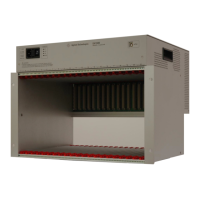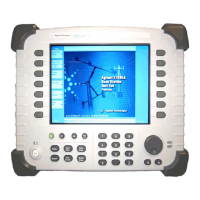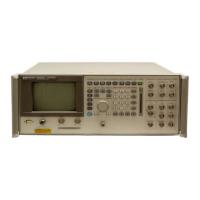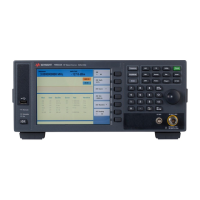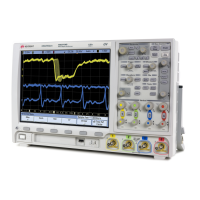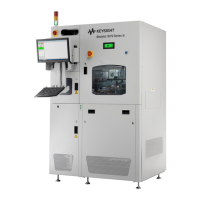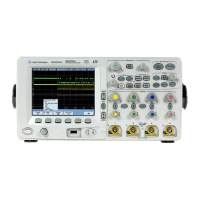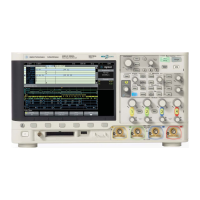256 Chapter 5
Post-Repair Procedures
Baseband I/Q Amplitude Accuracy Test
5. Preset the signal source and initialize the test equipment
parameters as shown in Table 5-7.
6. Perform the following steps for each test setup listed in Table 5-8.
a. Press
Input, Input Port to configure the input port of the
instrument.
b. Press
Input, I/Q Setup, I/Q Input Z to configure input impedance.
c. Press
Input, I/Q Range to select the desired voltage range.
d. Connect the signal source to the specified I/Q input connector. For
balanced measurements (when the I/Q input Z is 600 ohms
balanced or 1 M ohm balanced) connect a 50 Ω BNC terminator to
the complementary input. The complementary input for I is I
and
for Q is Q
.
e. Press
Marker, Search.
f. Record the measured value in the UUT Measured Amplitude
column for 100 kHz in Table 5-8.
g. Compare the measured and nominal values to ensure that the
measured value is within the 1dB test limit.
7. Press
SPAN, 5, then MHz to change the span of the UUT.
8. Change the signal source frequency to 5 MHz.
9. Repeat step 6 and record the measured value in the UUT Measured
Amplitude column for 5 MHz.
Table 5-7 Signal Source Initialization
Parameter Setting
Frequency 100 kHz
Level -16 dBm (100mVPP)
Modulation Off
Table 5-8 Amplitude Accuracy at 100 kHz and 5 MHz
Input
Port
I/Q Input Z I/Q
Range
(V)
I/Q Input
Connector
UUT Measured
Amplitude
(dBm)
Nominal
Amplitude
(dBm)
Test
Limits
(dB)
100 kHz 5 MHz
I only 50 Ω Unbalanced 1 I input −16 ± 1.0
I only 50 Ω Unbalanced 0.25 I input −16 ± 1.0
I only 50 Ω Unbalanced 0.125 I input −16 ± 1.0

